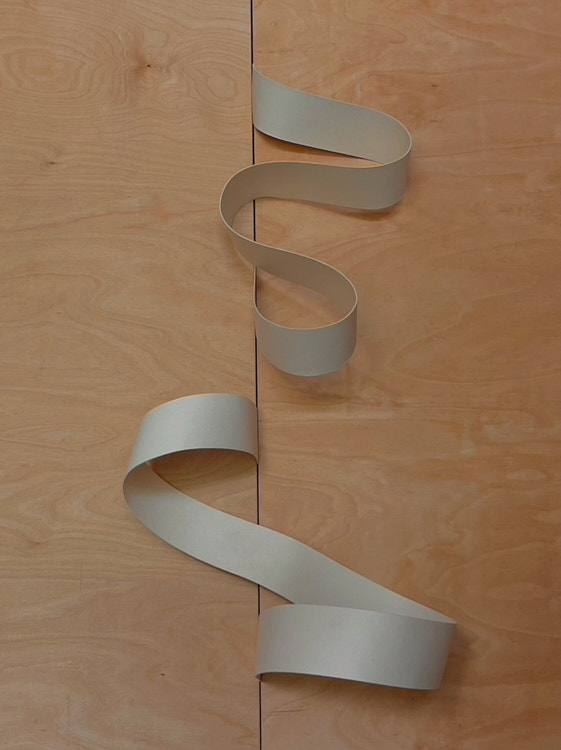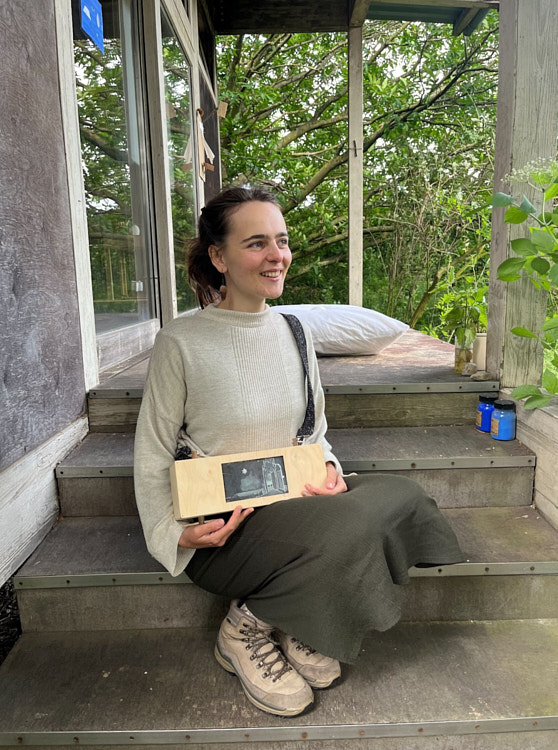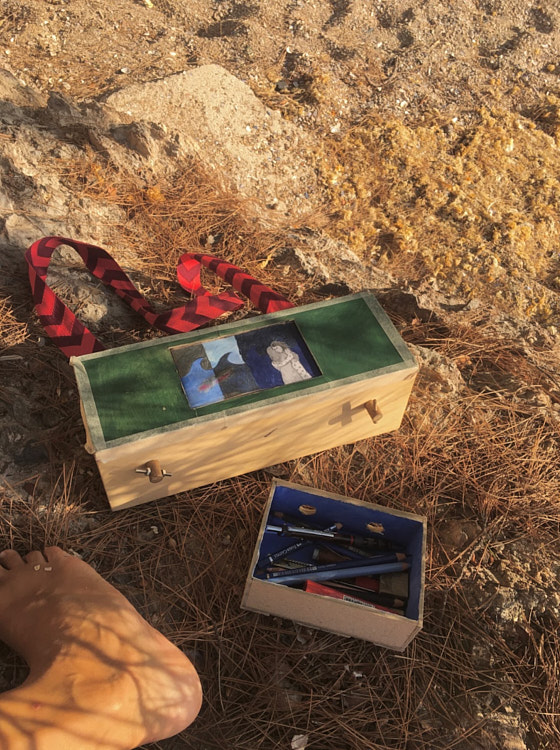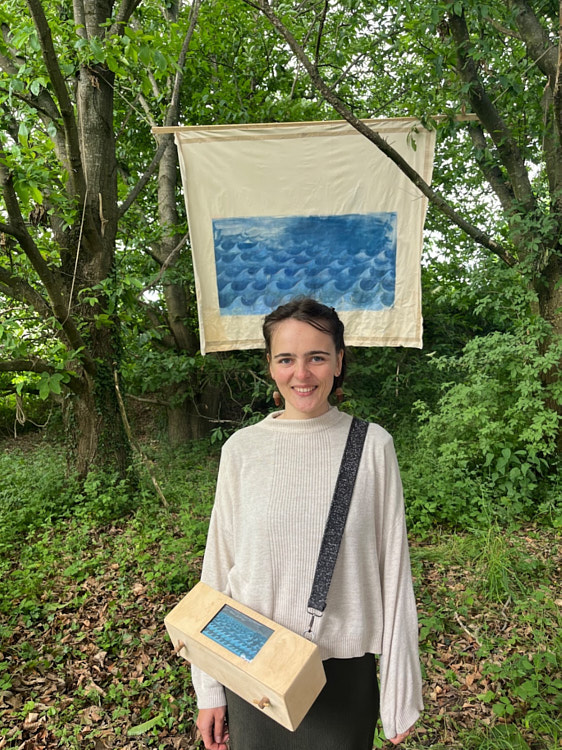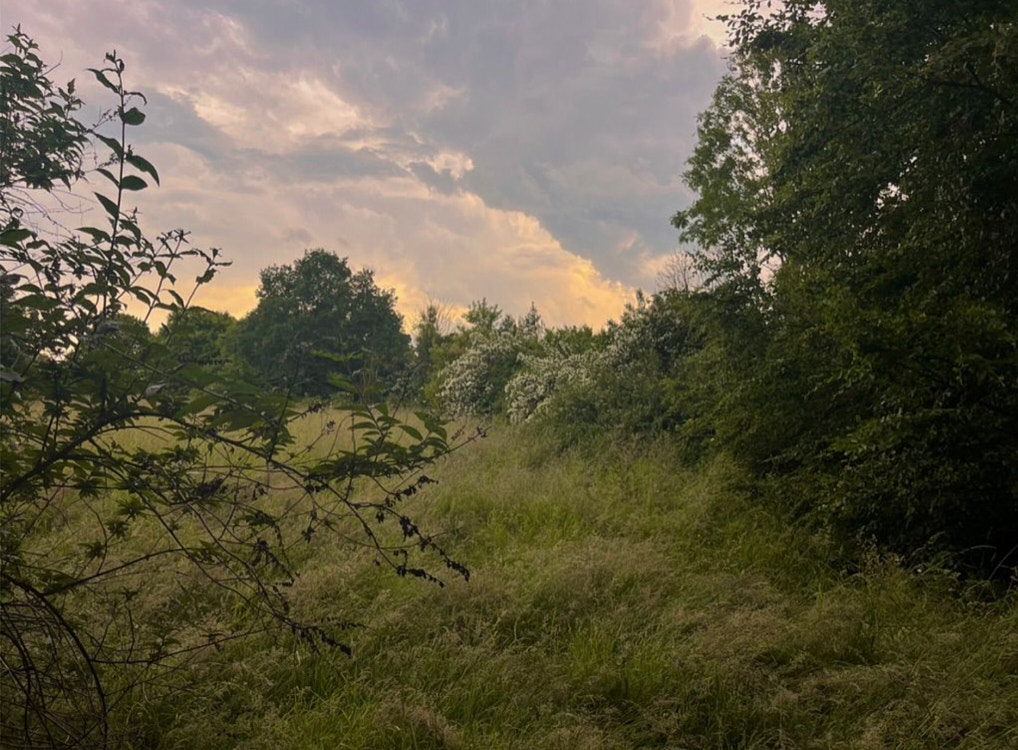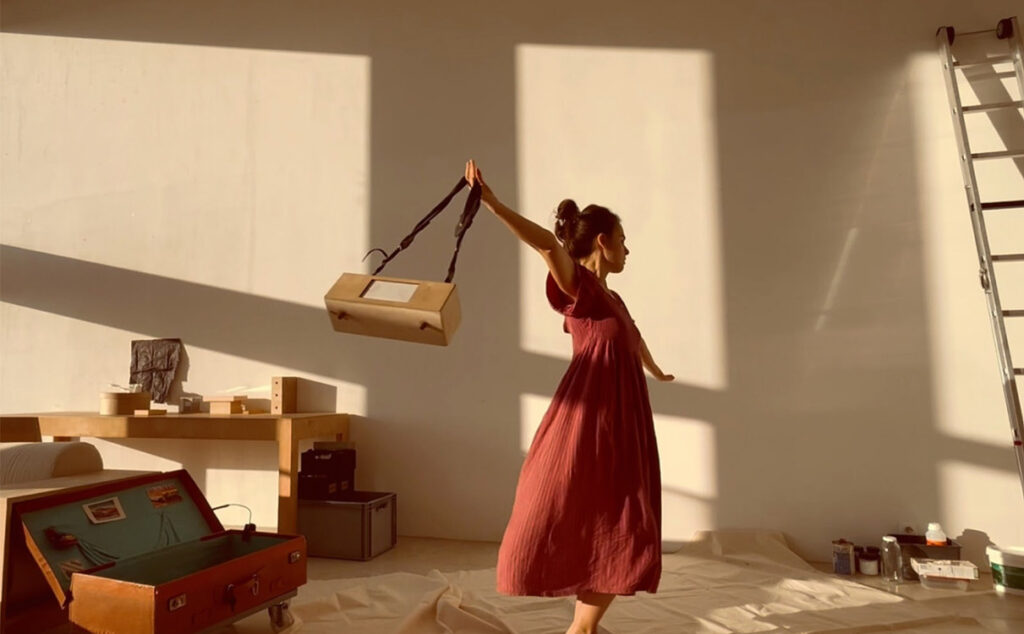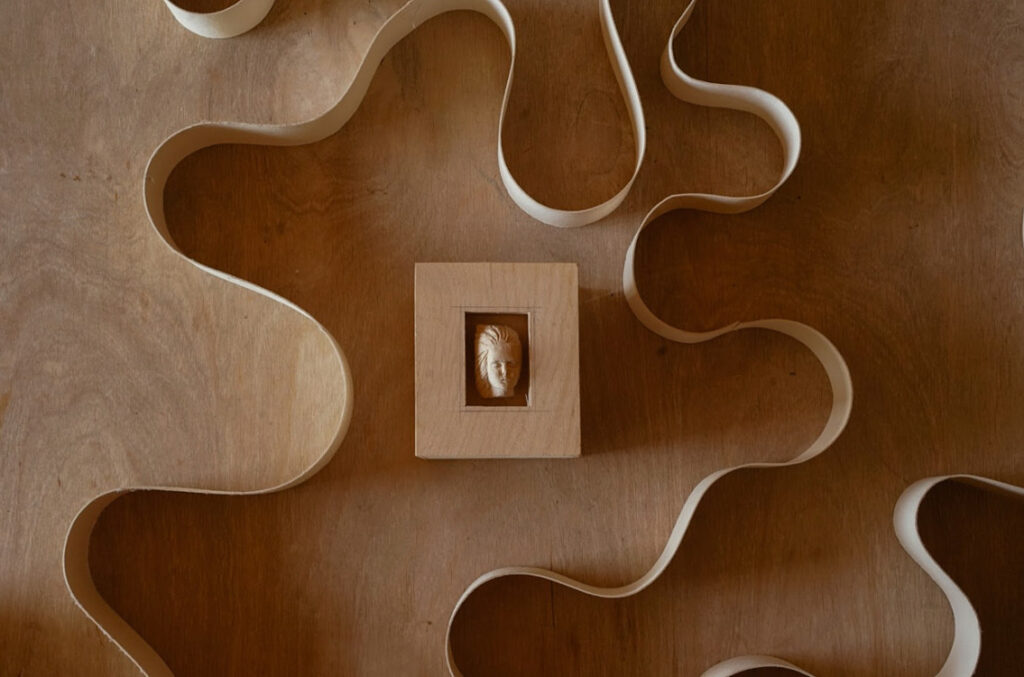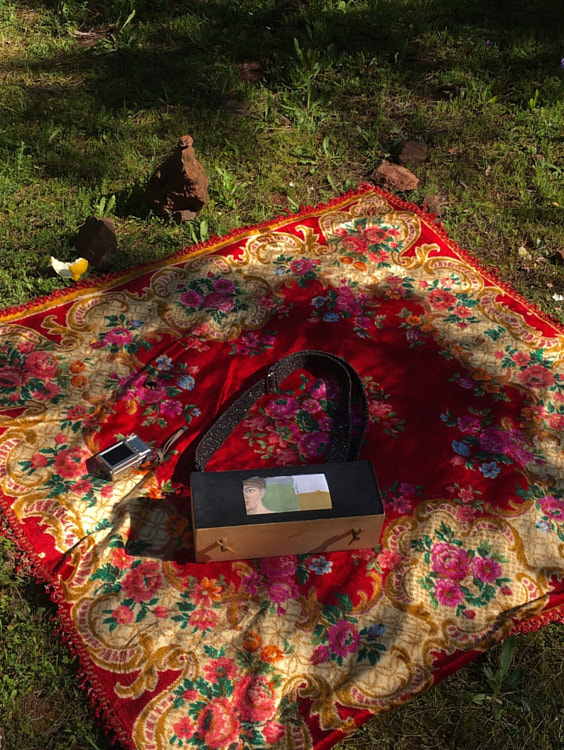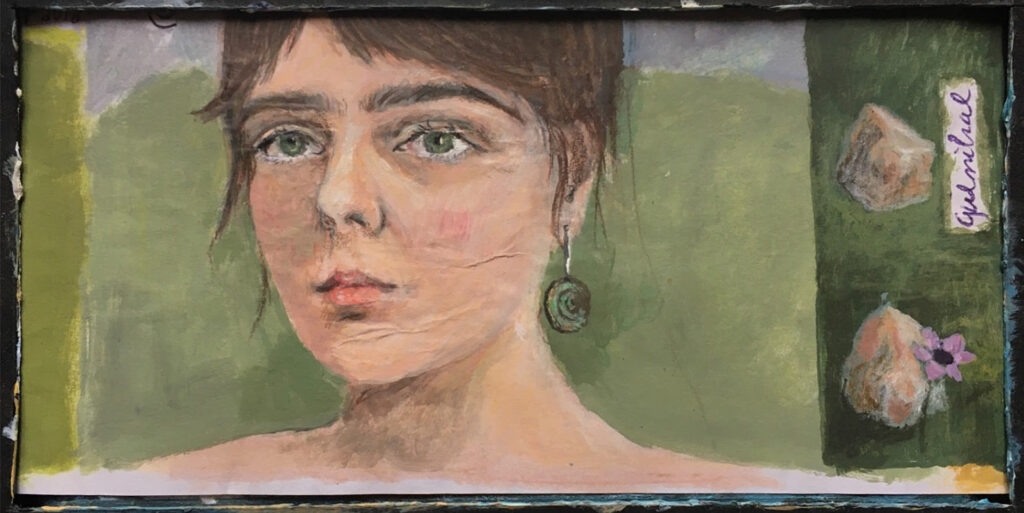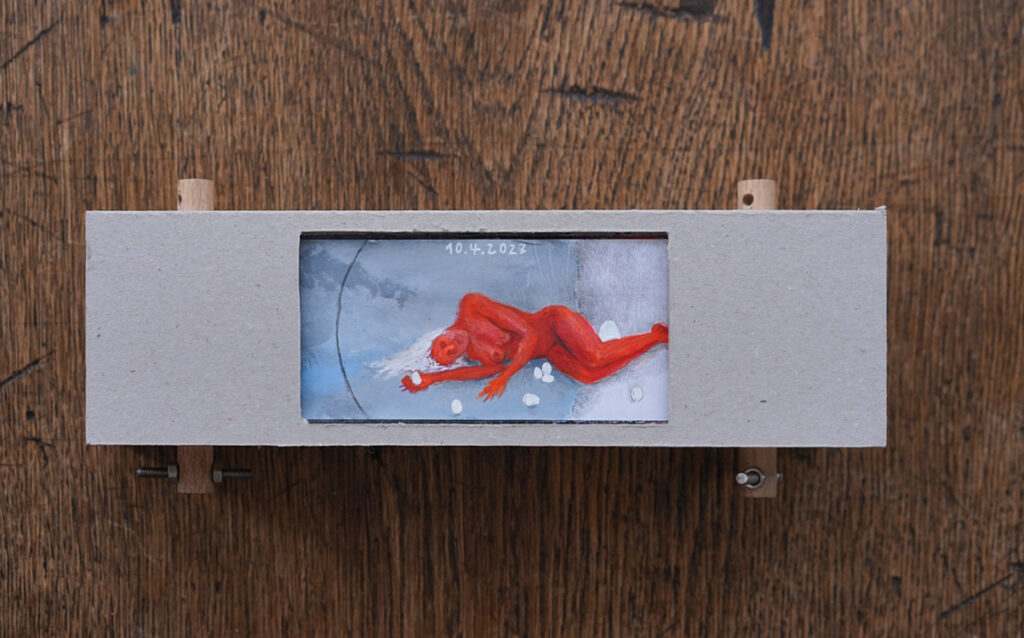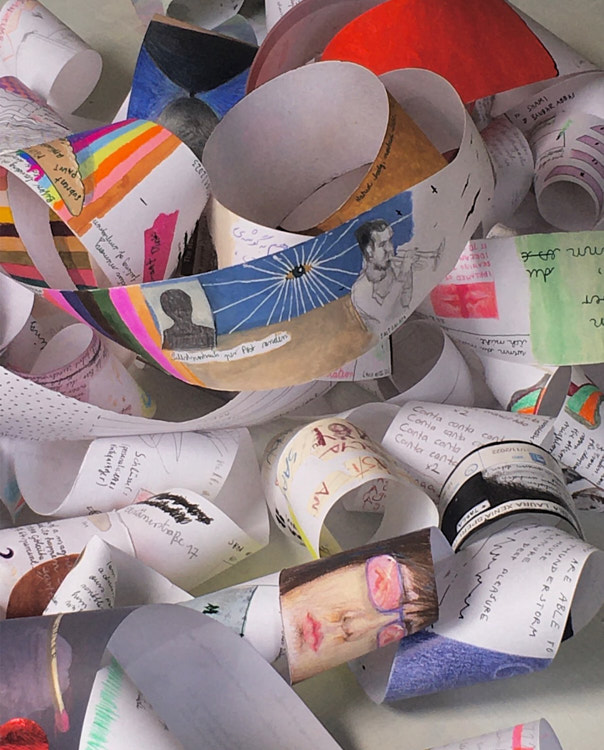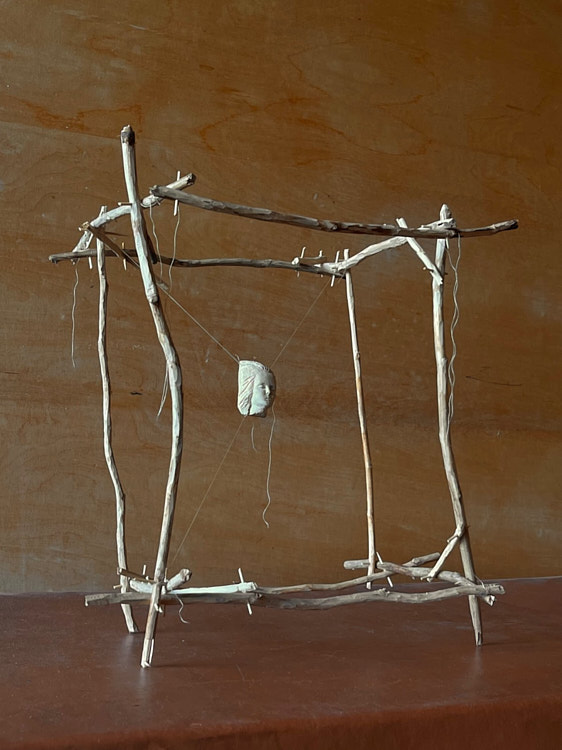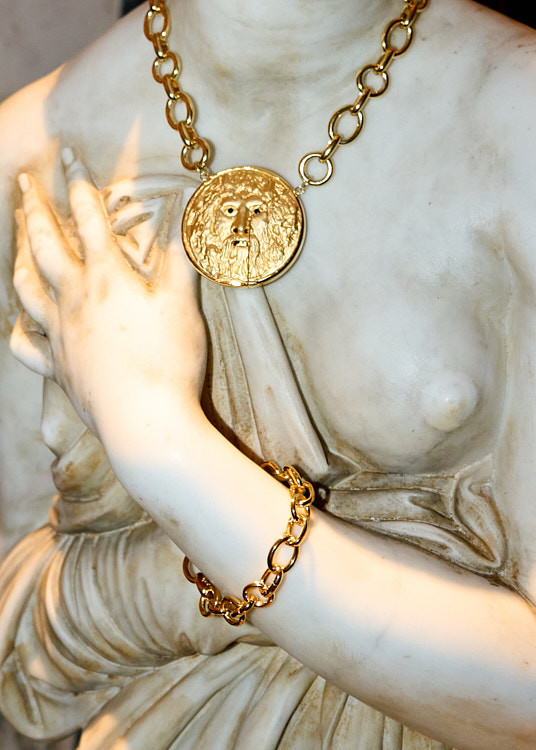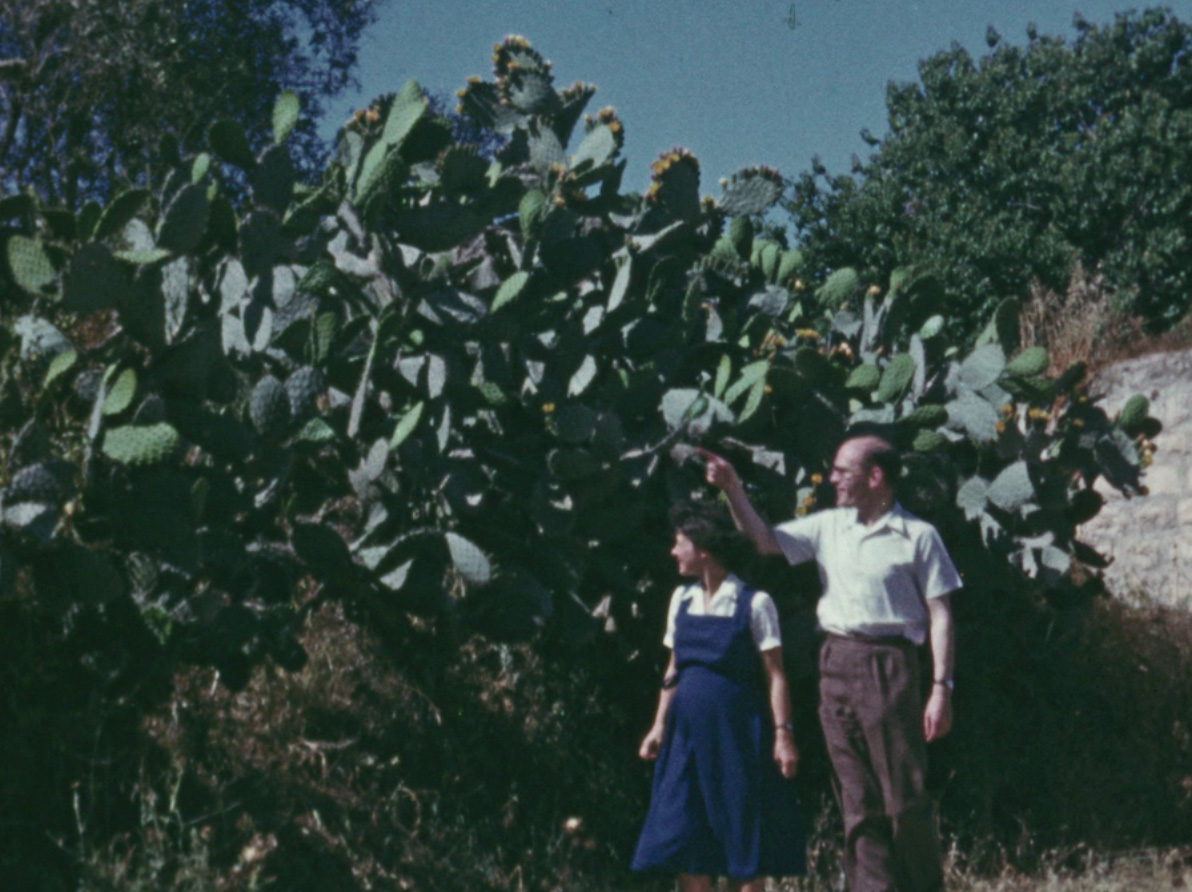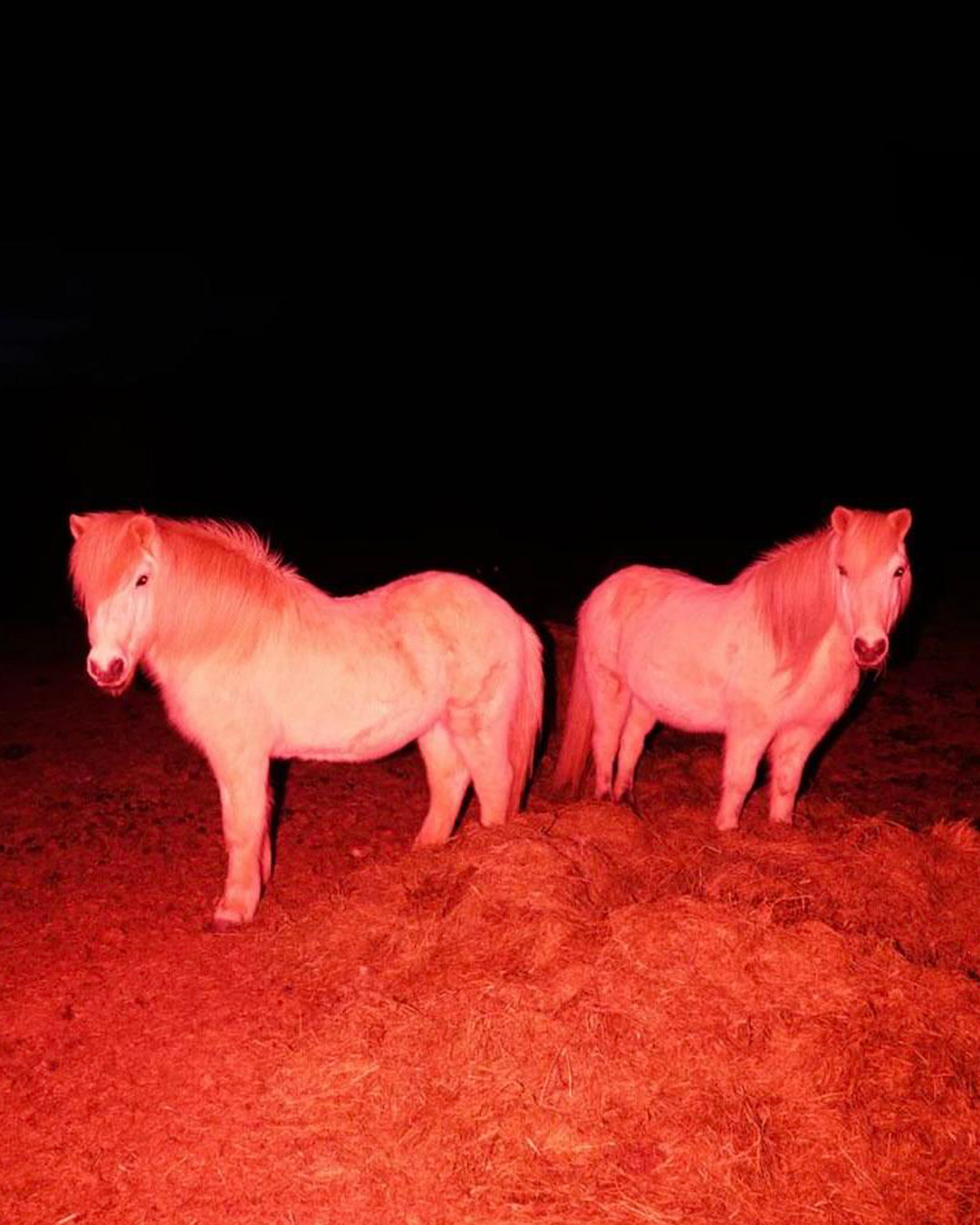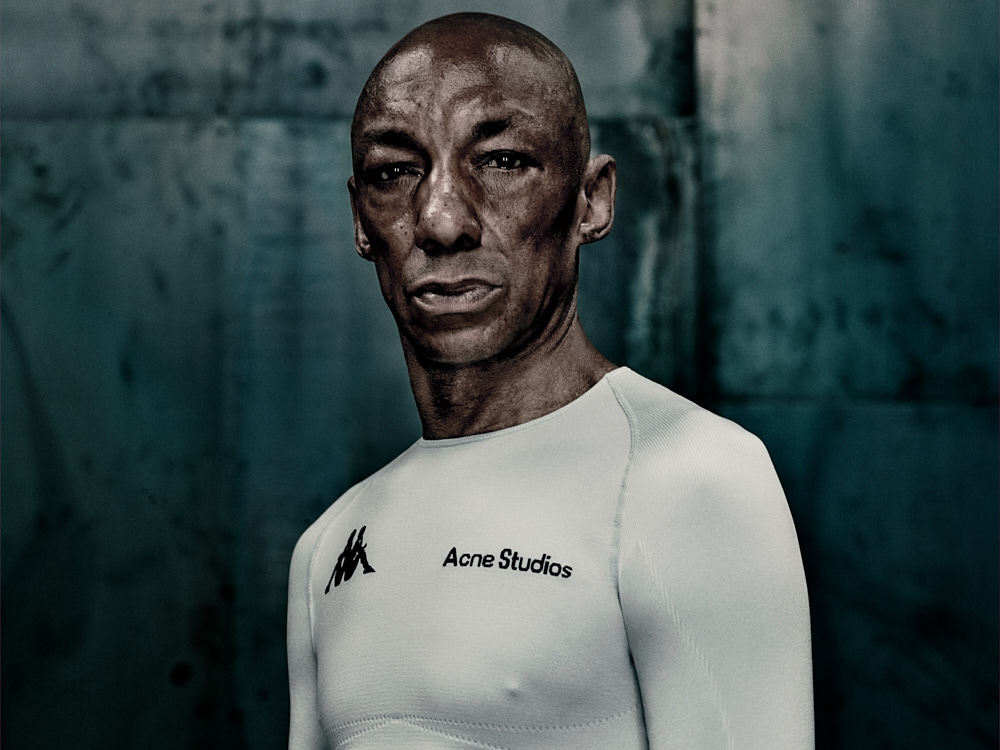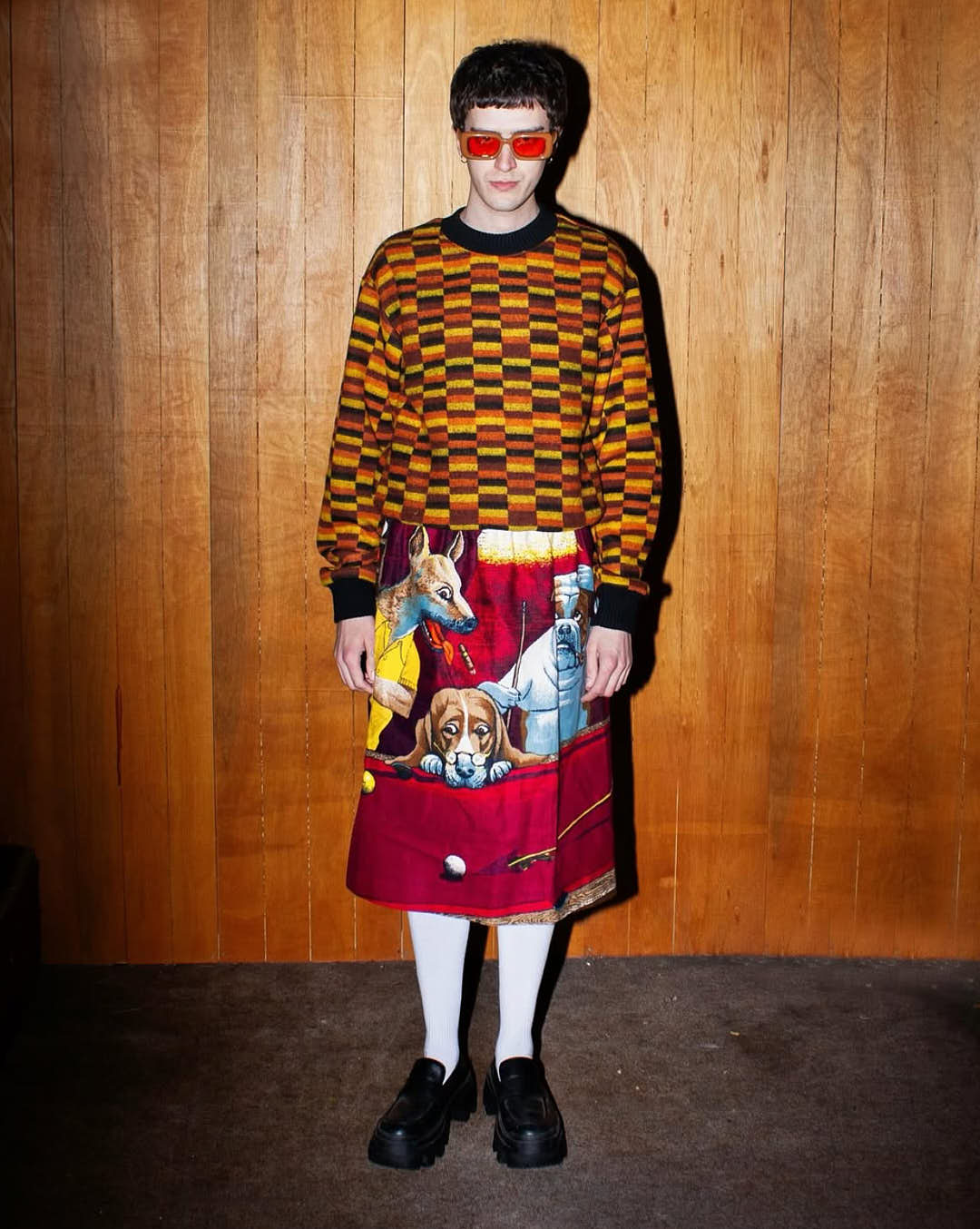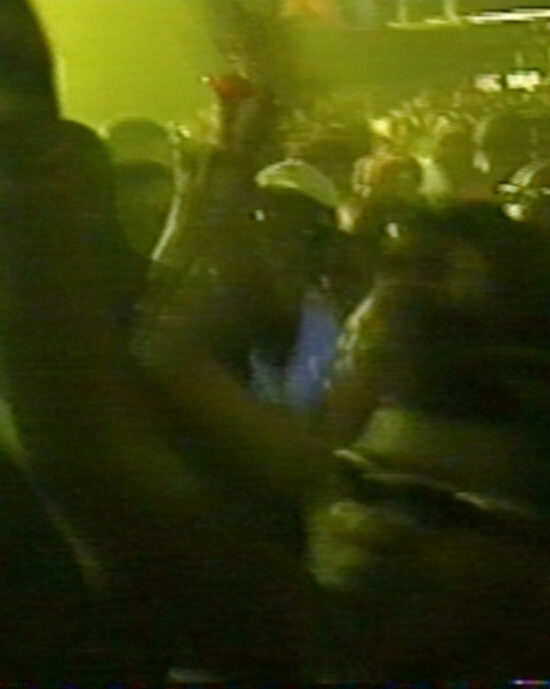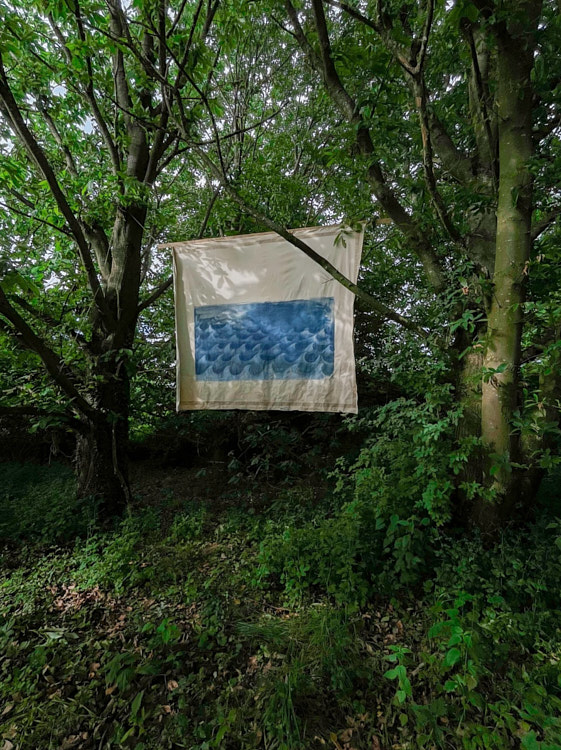
What Is Inside the Egg: Interview with Laura Sperl
by Zeynep Cekinmez
I visited Laura Sperl during her artist residency at the Insel Hombroich Foundation. We first met in Istanbul. Her calmness and quiet presence always stayed with me, and this time, I was grateful for the chance to glimpse what lies beneath her welcoming façade.
We spent a week in her home – a wooden hut called the “One Man House.” It stands alone in a vast field, where the wind stirs straw into delicate dances. If you close your eyes, it’s almost impossible to tell whether you’re listening to rustling grasses or the distant tides of the sea. For two months, Laura lived here, working on a travel diary created during her time in Turkey: a wooden spool holding a forty-metre-long paper strip. On this strip, she inscribed the present of her journeys, in fragments that, over time, gathered into what she calls a ribbon of memory – people who left their mark, places where she felt love and fragility. From these stories emerged performances and installations.
Her open studio on 29 May felt like a quiet revelation. Visitors emerged from the solitude of the field, drawn in by a doormat Laura placed at the beginning of the path. At the entrance, they encountered a lone egg resting on a pillow – an invitation to step out of everyday life and into Laura’s dreamlike world. She met each guest with curiosity, sharing the stories behind her works. After the opening, we sat down to talk about her creative process, the inspiration behind her work, and the rituals of her days at Hombroich.

The Cold Magazine (CM): How do you spend a day in Hombroich? What is your routine – do you work every day?
Laura Sperl (LS): Every day is different. I wake up somewhere between seven and twelve – it depends on what keeps me up at night and what wakes me in the morning. The first thing I do is cook and eat something, then I sit on the terrace and look out. I usually just look. I observe the field. Maybe that’s the only thing that truly happens every day.
It’s hard to describe a routine, really. During the first two months, I used to swim regularly. I’d take my old bike, ride through the fields, swim for an hour or two, and then bike back. It felt like a rhythm for a while.
You asked if I work every day. Yes, I do – but in a fluid way. It’s not like I finish swimming and then decide, “Okay, now I start to work.” Working happens all the time. When I go to the swimming pool, I carry a notebook with me. I describe and interpret the movements I experience in everyday life with words and images.
Creation often continues with those notes – the talks I have within me while I’m in motion. I write things down. Sometimes they remain as a sentence; other times they transform into something else. In this sense, work is constant. It doesn’t have a beginning or end, and it does happen every day.
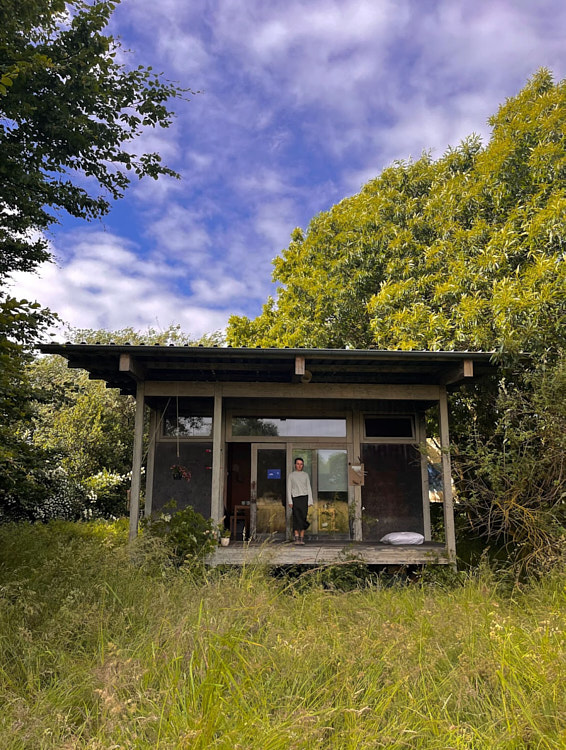
CM: What did you leave behind while coming here?
LS: I feel like I didn’t really leave anything behind. Somehow, everything that happened to me before seems to be finding its form here.
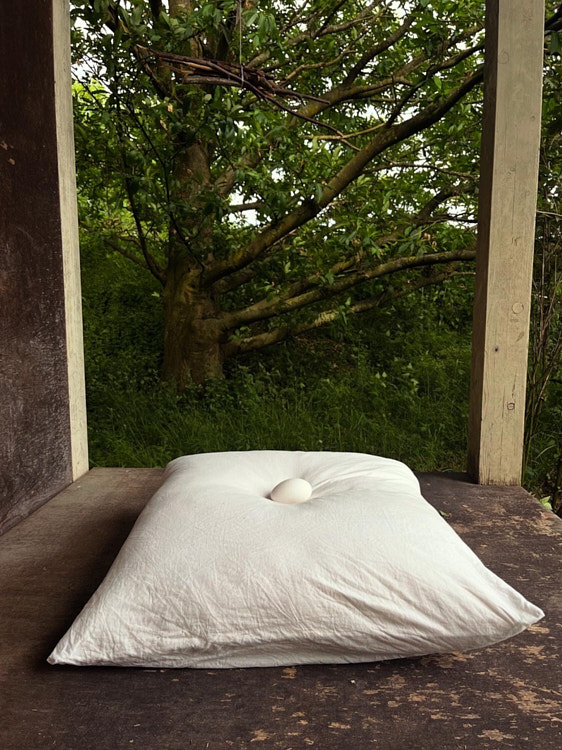
CM: When thoughts or images come to your mind, how do you transform them into your work? Is there a process you always follow?
LS: I don’t really have a rigid routine. I know some people do. They have structure, and they’re able to extract ideas in a consistent way and bring them into form. But for me, each thought finds its own path to materialise. It depends a lot on the constellation of that thought itself and the materials or environment surrounding us.
For me, the imaginative state is a natural state – some kind of status quo of the mind. In this perspective, the material world is not separate from imagination. It is a form of actualised imagination. A kind of byproduct of reality. A thought to me is a form of knowledge that overlays the imagined world, and together they create a shared transformation.
In my work, I try to reverse the order of perception. This reversal does not deny the factual – it stretches it, bends it, places it or casts it in another light. It is tested for depth and hidden potential in the process. For this, I need to forget what I think and return to immediate perception.
So, coming back to the question of process, I can only describe it in its fundamental workings: my gaze travels across the space I’m in, across the materials and tools around me. A thought might choose to settle on one of them. It seems to have its own agency – interacting with the tools, which in return offer different ways for me to touch the thought. Material and immaterial move toward each other. Or perhaps: the material holds spirit and the spirit holds material. I don’t control them.
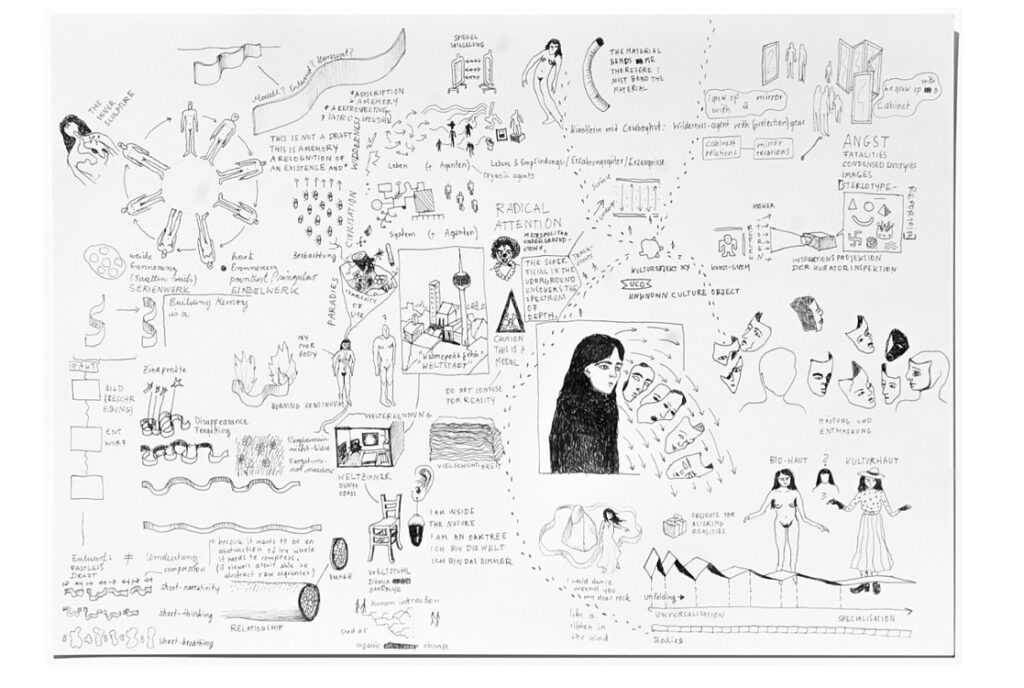
CM: Your journals narrate experiences from Istanbul. Do you feel that living in Istanbul changed you? Was there a moment when you thought, “From now on, I won’t be the same again”?
LS: I’m sure it did. I grew up in a smaller city – around 200,000 people – but I don’t believe cities function all that differently. They all move people, goods and information, and contain chaos. But Istanbul was foreign to me. And in that foreignness, something shifted.
I began to see my familiar inner and outer structures from new angles. Movements I once took for granted became strange – pregnant with the new, surprising. Not in a negative way, just unfamiliar. Because the connections in this new place were unknown to me, I could perceive things more individually.
Experiencing the city in the shape of “Istanbul” – in another country, at another scale – invited a kind of distance from myself. It widened my attention, not only to the city itself but also to myself. Istanbul became a kind of new mirror – or perhaps a cabinet of mirrors. It felt disorienting at times and liberating because of its exposing forces. I started to write down the inner movements this shift had triggered in me in the form of a manifesto, begun in January 2025. It takes the shape of monthly “legends” that trace my thoughts on transcendence and fracture – and how my experiences continue to transform me.
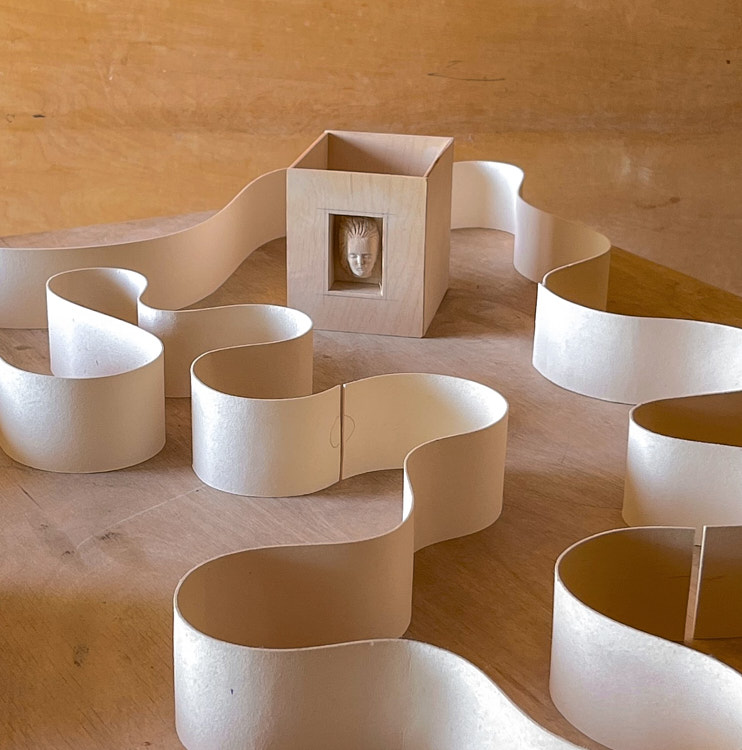
CM: Do you believe our lives follow a connected path – that events or people enter our lives for a reason?
LS: I believe events have consequences, but not in a fixed or destined way. Things unfold with their own rhythm, often beyond what I can foresee. At the same time, causality itself seems to elude me – my individual means of understanding cause and effect are limited.
Believing in fate, to me, is less about surrender and more about an attitude of humility toward the complexity of life. If fate exists, I imagine it as the highest complexity – something so vast that our existence is entirely enclosed within it, without an outside to relate to it. To find a balance between what I understand as causality and what remains untouchable – maybe that is where dreaming becomes important.
I like to dream that someone enters my life for a reason. Not because I am convinced it is true, but because imagination itself holds a kind of truth – a way of relating to what I cannot truly know.
For this reason, I think the two questions need their own space. I do believe our lives follow a connected path, but the individual routes we take on that shared journey spread across immense diversity and complexity. Between every encounter, there may lie a deeper cause we cannot fully trace.
Maybe it is nature itself that lies there – the force that both separates and connects. I thought about proximities when I created the ribbon models, searching for shapes in space. The ribbon curves and folds, and at one point, it almost meets itself again. There is a small gap – and it never quite touches.
In the model of the ribbon, I can observe that even the self can feel strange to its own earlier form. This suggests that identity and relationships aren’t static – instead, they are shaped by what moves between us. At times, certain spirits do feel closer to one another. This kind of closeness affects me. It alters the sequence I have been following; it impacts the curve of my life.
I don’t know what lies at the core. Maybe that would become clearer if I stayed in one place for longer. But for now, my life keeps moving – and so do I.
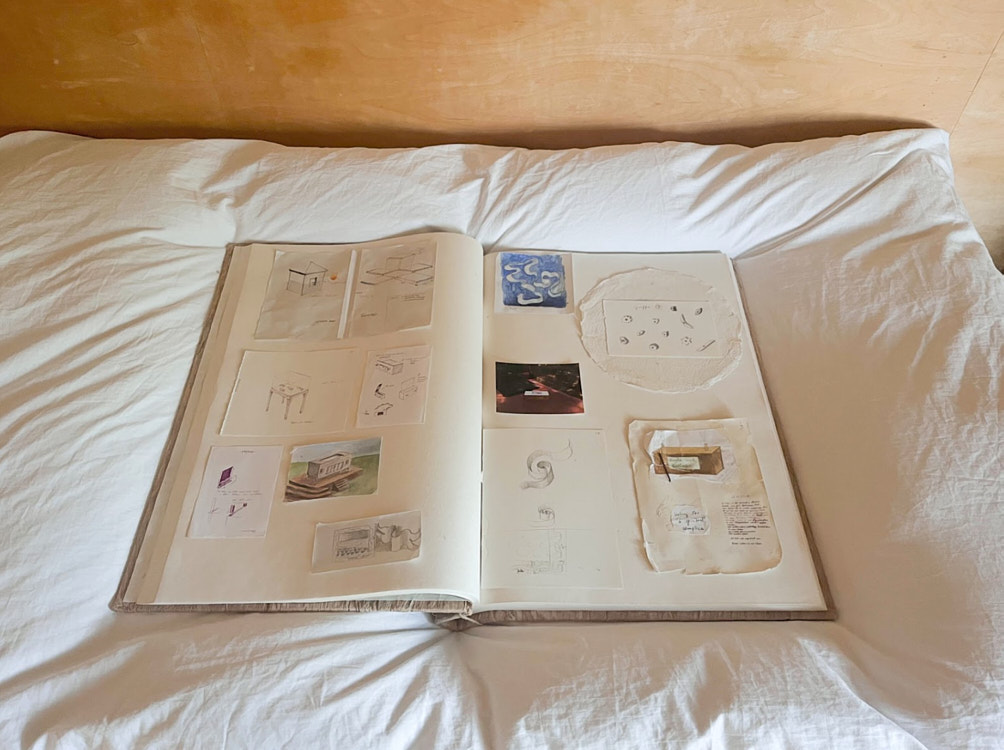
It was a pleasure crossing paths with you again, Laura – this time in such a different setting than Istanbul. Sitting in this peaceful garden, surrounded by your works and reflections, has been deeply grounding. Thank you so much for your openness and for answering my questions.
